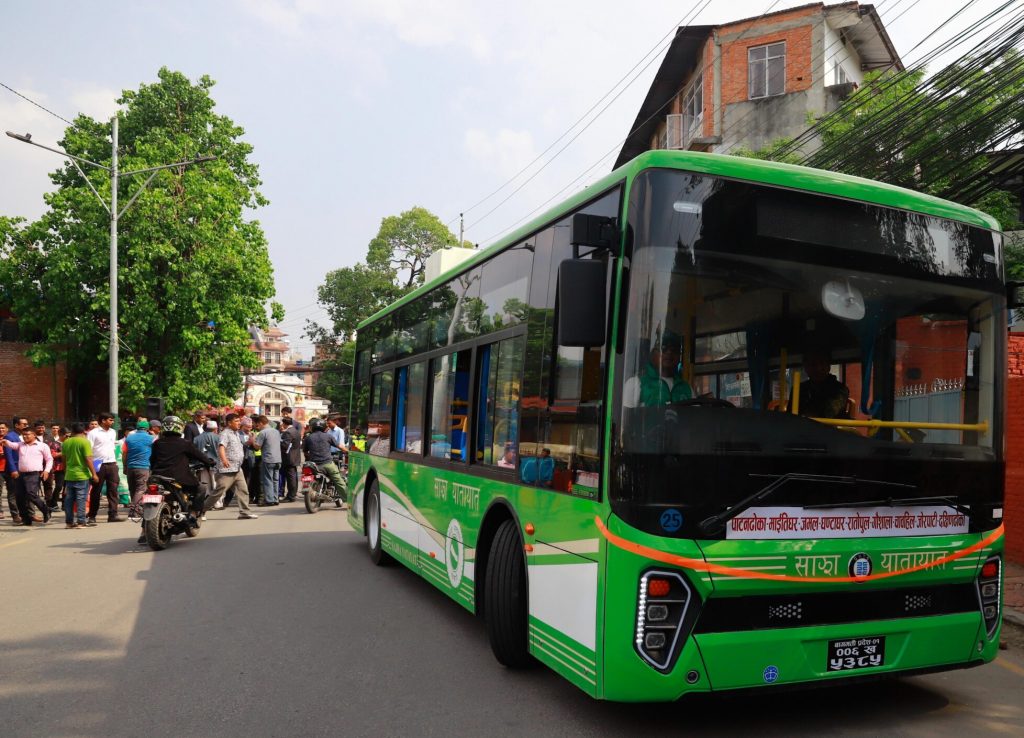Tax hike again can affect the target of Net Zero Emission by 2045
 The Nepal Weekly
The Nepal Weekly  January 2, 2024
January 2, 2024
It is to recall that Finance Minister Prakash SharanMahat, on November 10 highlighted how the concession on EVs was contributing to the shortfall in meeting the revenue collection target. He was speaking before the Finance Committee under the House of Representatives.
The Finance Minister argued that revenue was down because of increase in the import of EVs and the concession provided on the them. He explained that while the government traditionally receive a 300 per cent tax from the import of fossil fuels (petrol and diesel run) vehicles while tax on import of EVs are much lower tax like 30 per cent or even lower.
The government’s targetted revenue collection for the fiscal year 2023/24 is Rs 1.422 trillion. However, according to the Office of the Comptroller General, the government has only collected Rs 367 billion in revenue in the first five months of the current fiscal year. This amount accounts for only 25.83 per cent of the overall target.
The Office also said between July 17 and December 18, the Custom Department has only managed to collect Rs 136 billion, equivalent to 69.03 per cent of the Rs 197 billion customs revenue target.

In response to the observed shortfall in revenue collection and the government’s struggle to meet its current expenditure, the finance minister has consistently stressed, in various revenue-related meetings, the need to identify a basis and formulate plans for tax increases on certain commodities including EVs.
Thus, some doubt that Finance Minister Dr. Prakash SharanMahat may take the decision that once Dr.Yuwa Raj Khatiwada took to hike the taxes on EVs when he was Finance Minister of the country. Consequently, import of EVs dropped almost to zero. The corrections brought in after 4 months by his successor could not bring back the import trend of EVs.
It is also worth to mention that within a short period; Nepal had imported more EVs than fossil fuel vehicles. The fossil fuel run vehicle importers are lobbying with Government authorities for a conducive environment including revision on auto loan ratio to widen.
Moreover, EV is one such component that has topped the priority list to replace consumption of fossil fuels for the transport segment. As fossil fuels are contributing too much to climate change effects, a strong voice was heard in the COP28. They stakeholders mostly from developing countries were in favour to ‘Phase Out Fossil Fuels’. The global conclave, at the end, bring out a solution “transition away” from using fossil fuels in energy systems. However, it lacks short of a specific commitment to phase out the burning of coal, oil, and gas that many had hoped for.
The technologies related to EVs are on progress these days. The auto mobile manufacturers and scientists engaged mainly in energy storage technology are doing well to make EVs even better than fossil fuel run vehicles in term of ‘range anxiety’. Battery swapping and Solid state batteries are the hot topics in the EV world in the present context.

More to say, each and every automobile manufacturerin the world – highly recognised brands to starters – producing high quality EVs with luxury and looks. So as some even fear that EVs go ahead of their fossil fuel run vehicles.
Likewise, Hydrogen fuel cell is also uprising as a solution that can contribute to climate change action in future.
In Nepal, as sated above, if tax hike brought into effect again, the users will shift again to fossil fuel vehicles, EVs will not be their choice.
However, the Government, importers and commoners are almost silent on the promotion of EVs for Public Transportation. Some importers are successful in selling 11 to 14 seat microbuses. The operators who understood the value and saw profit are buying such EVs. Some taxi cars are also seen operated successfully.
The Government now must consider on conducive environment for battery run minibuses and buses which save a good deal of emission and fossil fuels. That means, 11 or 14 seat microbuses are not the transport solution for middle or long distance travels. They are so far ‘cost effective’. On the contrary the cost of minibuses and buses are too high – by manufacturers’ price and tax structure applied as almost the same rate on importing fossil fuel run minibuses and buses. Therefore, the importers and public transport operators are passive to this matter. They need to see good investment climate and good returns.
That means, EVs for public transportation can be promoted with financial supports – in terms of subsidy and also subsidy on interest of bank loans. Financial support on operational aspects contribute even more to promote EVs for Public Transportation in Nepal.






